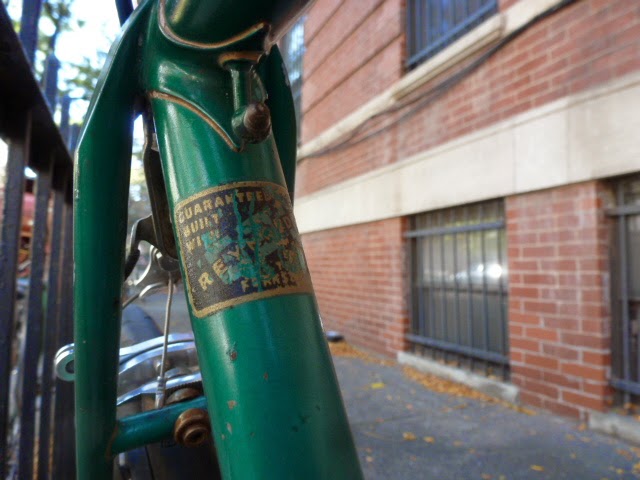Until recently, chainguards were anathema to most "serious" cyclists. I think it had to do with the fact that the first derailleur-equipped bikes most Americans saw, in the early days of this country's bike boom, lacked that amenity.
 |
| Chain guard on 1975 Schwinn Varsity |
Or, it had a disc--like the one in the above photo- that was about as good at keeping your clothes out of the chain as fishnet fenders would be at keeping you from getting sprayed during a monsoon.
More than a few cyclists and mechanics--including the late Tom Cuthbertson, author of Anybody's Bike Book--actually advised removing your chainguard and, if you rode with long pants, using cuffs or bands.
For more than three decades, I rode bikes without chainguards. In fact, the idea of installing one on any of my bikes scarcely even crossed my mind.
Then, about a decade ago, there was a cosmic convergence. All right, maybe it wasn't quite cosmic, but it was unexpected and perhaps serendipitous for makers and sellers of chainguards. Around that time, a demand for "practical" bikes--including Dutch-style, English three-speed and Parisian porteurs--emerged along with an interest in vintage bicycles. Folks like Chris Kulczyki, the founder of Velo Orange started rummaging warehouses, first in North America, then in Europe, looking for beautiful old chain guards like this one:
 |
| Mercier chain guard |
I love that one, and others that have cut-out patterns and such. I equally love the ones that are simply shaped and finished to fit with the overall aesthetic of the bike, like the one on this 1958 Motobecane Pantin Ladies' bike:
Pantin is the community on the outskirts of Paris where, for decades, Motobecane made its bicycles and mopeds. It seems fitting as a model name for a city bike that's elegant enough for the most urbane boulevardier. Such a person probably would not dream of riding without a chainguard!




























